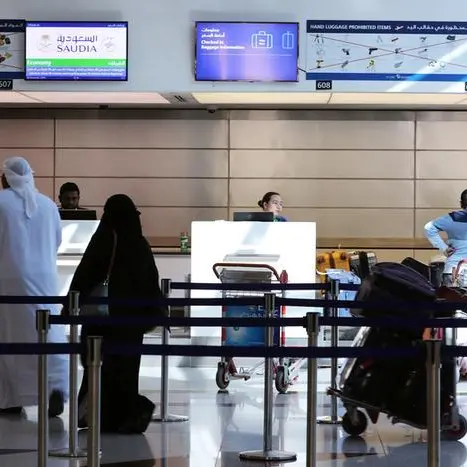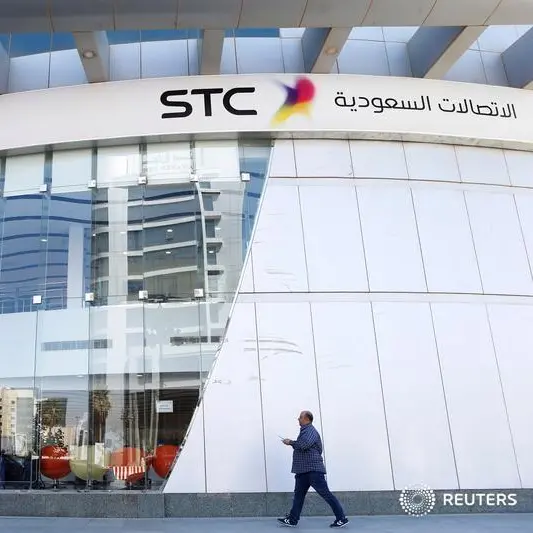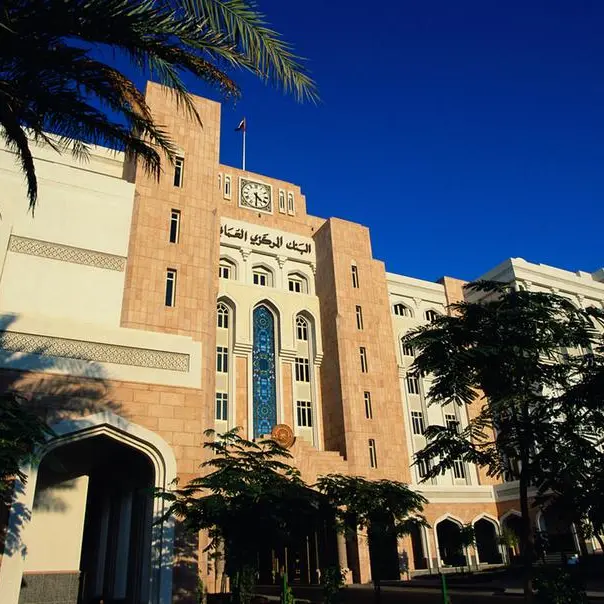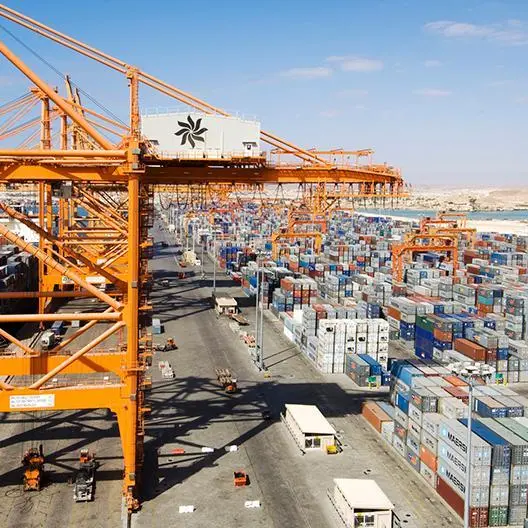PHOTO
08 February 2020
The phase one trade deal between China and the US is expected to be a boon to the Chinese real estate sector as the deal signed last month will provide a short-term boost to the economy and a flexible monetary policy, thus supporting a recovery in business sentiment.
"While China's retail and logistics property markets have been largely shielded from the impact of the trade conflict, the deal is expected to improve consumer confidence and boost shoppers' willingness to spend. This will encourage occupiers to commit to expansionary moves, all of which should ensure a mild recovery in office demand in 2020," said global real estate consultant CBRE in its China Market Flash released in December.
China's central bank, the People's Bank of China, said its monetary policy would be flexible in 2020 and it would keep growth in money supply, credit and aggregate social financing in line with economic development. The bank also said it would cut the required reserve ratio (RRR) on commercial banks by 50 basis points, which would pump $111 billion (RMB773.86 billion) into the banking system to lend to factories, investment projects and households.
On the real estate investment front, CBRE expects investors to react positively to the trade deal. "The lower risk of RMB devaluation and volatility will come as welcome news for cross-border investors in China," it said.
2019 performance
China's key commercial subsectors including office, retail and logistics performed moderately in the last two quarters of 2019, despite a rising new stocks and slowing economy amidst the US-China trade disputes.
In Q3, the office markets in all tier I cities saw a mixed trend in rents but other cities performed differently, according to Knight Frank. For example, Guangzhou saw rents increased slightly 0.2 per cent Q-o-Q to RMB178 per sqm per month as demand increased.
"But Shanghai recorded a 1.1 per cent Q-o-Q drop to RMB 270 per sqm per month, thanks to new supply, whereas, Beijing office rent is perhaps the most expensive amongst tier I cities reaching RMB360 per sqm per month," said David Ji, Head of Research & Consultancy, Greater China at Knight Frank.
China's economy grew by 6 per cent in Q3 2019, the slowest rate since 1992, with the International Monetary Fund (IMF) revising down China's full year GDP growth for 2019 to 6.1 per cent.
Ji said vacancies are forecast to be on the up as some cities are facing large new supply which will put pressure on rents.
China's national office index fell by 0.6 per cent Q-o-Q in Q3 2019 and vacancy rose to 21.5 per cent, according to CBRE. It said most vacant spaces were recorded in mid-western cities and emerging submarkets, with the average vacancy rate in core submarkets of tier I cities was below 10 per cent in Q3 2019.
However, Sam Xie, Head of Research at CBRE China, said there are some early signs of recovery in office demand, backed by the continued expansion of technology, media, and telecom (TMT) companies, and more activities by multi-national companies (MNCs) amid the central government's opening-up initiatives.
New office supplies abundant
He expects office new supply to remain abundant, providing occupiers with good options to implement strategic corporate real estate (CRE) plans such as consolidation, upgrade and decentralization.
Daniel Yao, Head of Research at JLL China, agrees that China's key office markets remained tenant favourable in general as a result of softening in demand and large available space.
"Among the demand sectors, we noticed that the importance of the TMT sector became more evident. Tech firms are looking into setting up a national footprint, by setting up in cities like Chengdu, Chongqing, and Xi'an as well as the traditional tech hubs, like Beijing, Shenzhen, Shanghai, Hangzhou," he said.
Yao points out that traditional companies are setting up digital divisions to improve digital capabilities, resulting in more tech hires.
Rising leasing demand
In the retail sector, the first nine months of 2019 saw 134 local and overseas brands establish their first store in China, driving leasing demand and reducing nationwide vacancy to a 10-year low of 6.4 per cent in Q3 2019, according to CBRE.
China's logistics sector saw net absorption jumping by 79 per cent Q-o-Q in Q3 2019 due to short-term seasonal leases by e-commerce companies ahead of the Double 11 shopping festival held in November 2019.
"In general, retail and logistics markets are expected to perform steadily, and both have been driven by the solid growth of China's consumption market," said Xie of CBRE.
JLL's Yao points out that well-managed retail operators are outperforming the market through continued development of experiential outlets and "new" retail, aimed at engaging consumers beyond traditional purchasing needs.
"Logistics warehouses sector saw rental growth moderate as demand has slightly regressed from 2018, but overall supply remained relatively tight," he said.
Yao expects retail rents will continue to show a degree of divergence. Outperformers are expected to see mild growth, but less-experienced operators will prefer to maintain current or even offer discounted rental levels in an effort to fill ample vacancy," he said.
However, the logistics sector should stay more resilient with strong fundamentals from a consumption perspective.
Transaction volumes up
Chinese real estate sector continues to attract foreign capital, with RMB 54.6 billion ($7.83 billion) of en-bloc transaction being concluded in the first three quarters of 2019, doubling the amount of the same period last year, according to CBRE.
"China is the number one destination across APAC for cross-border investment in 2019 according to the APAC Investor Intentions Survey 2019. However, cross-border investment accounted for just 14% of the total transaction volume in Q3, 2019," said Xie of CBRE.
In additional to cross-border investment, merger and acquisitions among developers were active. There have been rising activities by domestic corporations and institutional investors like insurers.
Chinese real estate sector also benefitted from the restriction on domestic firms to invest in overseas property. "Money is being directed towards the domestic market," said Ji of Knight Frank, adding that the growth of cities and new economic zones such as the Greater Bay Area are also attracting investment. Some alternative investment such as e-commerce related logistics and data centres are favoured, riding on the successful story of huge online shopping market.
Investors with a mid-to-long time horizon still actively looking for assets in China and especially in tier I cities, said JLL's Yao. He said Beijing stood out in 2019, accounting for more than 20% of total China investment volume between Q1 and Q3, 2019 as more tradable assets in Beijing became available, which has relieved pent-up demand from investors.
CBRE expects full-year transaction volume to top the RMB 200 billion ($28.69 billion) mark, supported by highly leveraged developers' willingness to sell amid the slow residential sales market and impending debt expiry.
In terms of outbound investment, Knight Frank's Ji said the peak has passed as investors from China are becoming more cautious and tend to invest in sectors that will benefit China economically. "So the volume may not be as large as in previous years," he said, adding that offices in major global hubs such as London continue to be favourites.
While there has not been an increase in outbound investment from China, CBRE's Xie said they noticed some Chinese investors were using their overseas platforms which they acquired a few years ago to expand their overseas investment.
For example, in September 2019, PAREF, a French property investment firm acquired by Fosun in 2017, acquired six floors in Franklin Tower at Paris La Defense.
"Fosun also acquired Pegasus Business Park in Brussel through its insurance platform, Fidelidade in September 2019. Whereas, Sino-Ocean Group used Sino-Ocean Capital to form a joint venture with Meridian Senior Living to acquire two senior housing in the US," he said.
"Chinese investors are mainly focused on the office sector with some demand looking for senior housing investment in the US."
2020 outlook
The US-China trade deal is expected to boost economic growth, with Swiss brokerage UBS expecting China's GDP growth to stabilise at around 6 per cent in 2020. Although this will help improve the leasing activities, China's rental market is expected to continue to face considerable pressure due to the large volume of new supplies.
On the leasing front, said JLL's Yao, many companies are expected to remain cautious amid recent economic uncertainty. "That said, the TMT sector will rise to become a major force in office demand. We believe the impact will deepen as the sector works on completing its industry ecosystems," he said.
On the investment front, Yao said domestic insurance companies are expected to become more active in the market. "It is also worth noting more and more investors showed increasing interests in the alternative sector in China, like the data centre sector."
CBRE expects the agreement's inclusion of measures to expedite the removal of foreign investment barriers in the financial industry will accelerate the opening up of this sector.
Xie points out that China will fully open its life insurance, securities and some other financial sectors in 2020, and the short-term outlook of US-China trade conflict is improving.
"There will also be continued moderate monetary and fiscal easing in 2020. These domestic and international factors are expected to exert a positive impact on the leasing and investment activities of commercial properties in China in 2020," he said.
(Reporting by Syed Ameen Kader; Editing by Anoop Menon and Bhaskar Raj)
(anoop.menon@refinitiv.com)
Disclaimer: This article is provided for informational purposes only. The content does not provide tax, legal or investment advice or opinion regarding the suitability, value or profitability of any particular security, portfolio or investment strategy. Read our full disclaimer policy here.
© Thomson Reuters Projects News 2020












